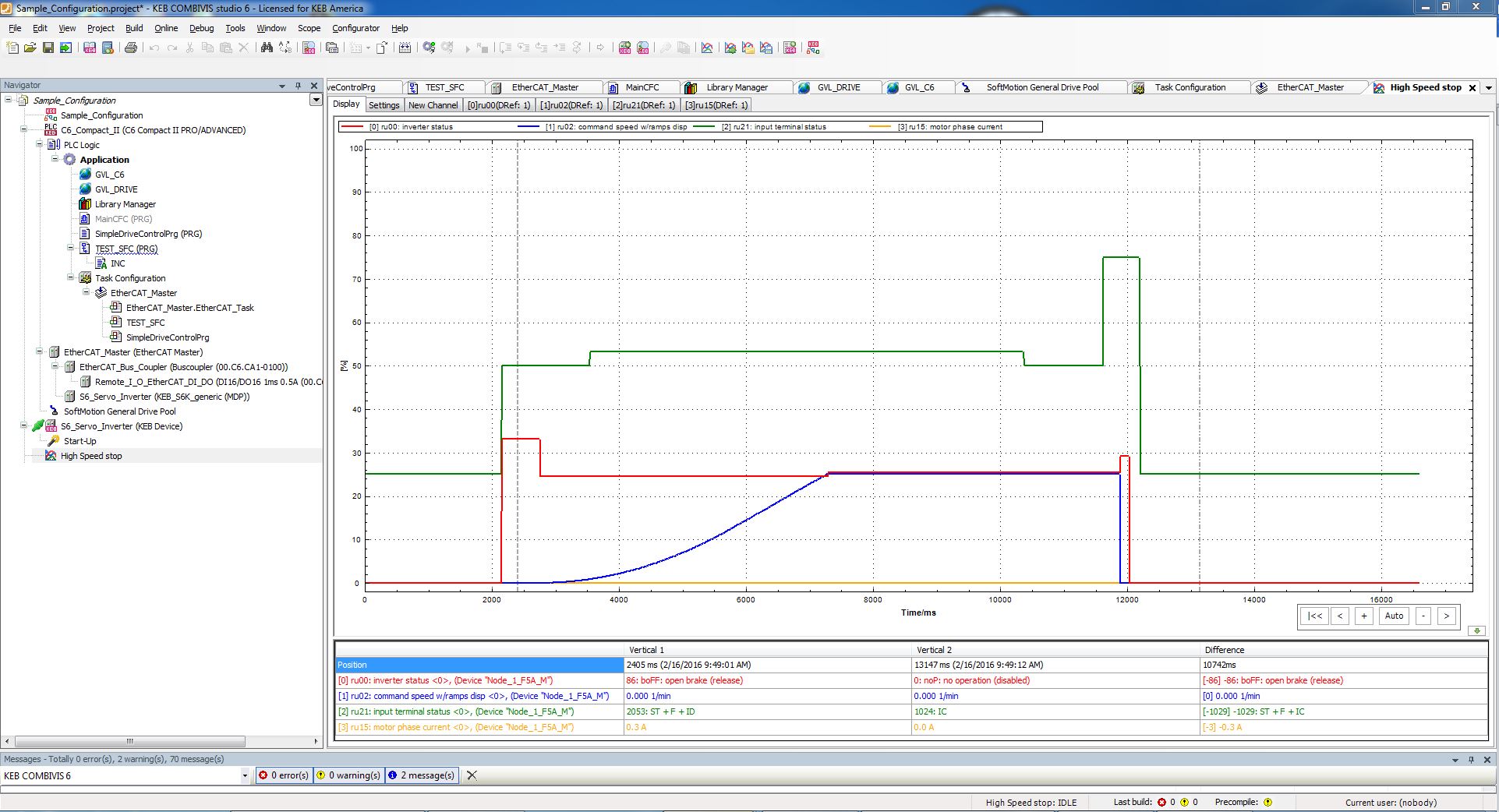KEB Modbus TCP Drives – An Introduction and Start-up Procedure
With the addition of Modbus TCP to the S6 and F6 fieldbus options, KEB has added even more flexibility for machine builders. KEB’s Application control card now supports EtherCAT, FSoE, EtherNet/IP, ProfiNet, Powerlink, and Modbus TCP. This post will focus on Modbus TCP and provide a basic overview of the start-up process using the S6 Servo Drive and F6 VFD.

What is Modbus TCP?
Modbus TCP is the latest version of the Modbus communication protocol. Unlike the older RTU variant that utilized an RS-485 serial port, the TCP variant is built upon TCP/IP networks. This allows for faster communication while using the more common physical network of Ethernet.
Modbus TCP Overview and Applications
Originally developed by Modicon (now Schneider Electric) in 1979, Modbus is used to establish master/slave communication for industrial applications. Within the network, each device is assigned a Modbus address, and communication is done with simple 16-bit messages. These messages can consist of:
- Coil: Simple on/off that can be read or written to by the master
- Discrete Input: Simple on/off that is read-only
- Input Register: Read-only value that is 16-bit (numerical values 0-65535)
- Holding Register: 16-bit values that can be read or written to by the master
After its release, Modbus quickly became very popular, especially in the North American market. This is because it has a relatively straightforward and simple implementation, so it is easy to work with while also being open source. All of this makes Modbus TCP an ideal fit for process applications such as fans and pumps. However, Modbus does have the drawback of having slower cycle times relative to other fieldbuses. So there might be better deterministic fieldbuses for demanding motion control applications.

x6 Modbus Implementation – Improving on the F5
The development of Modbus TCP within the S6 and F6 drive products adds a number of benefits for machine builders. First, and perhaps most importantly, the Modbus TCP implementation is certified by the Modbus Organization, so the user can feel confident it can be designed, deployed, and operated without issues.
Modbus TCP Improves Response Times
Additionally, the S6 and F6 offer much faster response times than past generations. Now a response time of 3ms is guaranteed, regardless of the number of registers that are being read/written. Previously, the F5 drive had a response time that was roughly 3ms per register. Finally, the x6 drives support IP Address configuration via Static, DHCP, BOOTP, and rotary switches. This makes for an easy and customizable way to configure the network settings.

KEB Generation 6 Modbus TCP Start-up
In the S6 and F6 drives, setting up the Modbus TCP communication is a breeze.
- First, since these drives support EtherCAT, EtherNet/IP, Powerlink, and ProfiNet as well, the Modbus TCP protocol must first be selected.
- Next, the IP Address must be configured. For this, the rotary switches always have priority. If those are set to zero, the default method is DHCP, but a static or BOOTP method is also possible.
- Finally, the PDO mapping must be configured. This is easy to achieve with the fieldbus start-up wizard in the Combivis 6 software. With this wizard, the user can see the current mapping, see how many objects or bytes are still available, and drag and drop additional parameters. Using KEB’s Combivis software, it is also possible to get diagnostic data over Ethernet. With these three easy steps, the Modbus TCP is configured within the drive.

Get Started with KEB Modbus TCP Drives
The pairing of Modbus TCP and KEB’s next-generation S6 and F6 drives makes for a great application solution. Interested in learning more about how they could be used together in your machine? Contact an Application Engineer at KEB America today!
Let's Work Together
Connect with us today to learn more about our industrial automation solutions—and how to commission them for your application.






